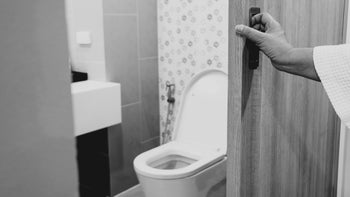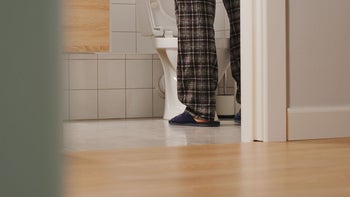
7 Things You Can Do to Get Rid of a Urinary Tract Infection (UTI) Fast
Key takeaways:
A urinary tract infection (UTI) is a very common infection, especially in women. Typical symptoms include pain while urinating and needing to pee more often.
The treatment of UTIs usually requires antibiotics, which means you’ll need to visit a healthcare professional. Telehealth services can make it easier to schedule an appointment.
Getting started on your antibiotic right away and drinking plenty of water are some of the most important steps to get rid of a UTI fast.
Table of contents
Urinary tract infections (UTIs) are one of the most common bacterial infections in the U.S. Close to half of all women and about 1 in every 100 men will experience a UTI at least once in their lifetime. Fortunately, there are things you can do to get rid of a UTI quickly. Let’s take a closer look at what a UTI is and how to get fast relief.
What is a UTI?
UTIs are caused by bacteria entering the urinary system, which can sometimes happen during sex. They can affect your bladder, kidneys, or urethra — all parts of your urinary tract.
UTI symptoms
UTI symptoms are pretty distinct. This makes it possible to recognize a UTI early. Symptoms of a UTI include:
Pain or burning while urinating
Increased urgency to pee
Cloudy or foul-smelling urine
Search and compare options
If you think you have a UTI, chances are you’re pretty uncomfortable. And you’re probably wondering how you can find quick relief. Here are seven things you can do to feel better fast.
1. See a healthcare professional
UTIs aren’t usually a cause for major concern. But if you don’t treat them, they can lead to more serious problems, like a kidney infection. If you think you may have a UTI, make an appointment with a healthcare professional as soon as possible. The fastest way to feel better is by taking an antibiotic to get rid of the bacteria causing your infection.
If an in-person visit isn’t an option, there are telehealth services available that allow you to set up a virtual appointment. Check out GoodRx Care for treatment of UTIs and many other medical conditions.
During your appointment, your healthcare professional will ask about your symptoms and if you’re prone to UTIs. You might be asked to provide a urine sample, and they may prescribe you a course of antibiotics.
2. Get your prescription filled right away
Once you have a prescription for an antibiotic, it’s important to fill it at a pharmacy as soon as possible. The faster you start taking your medication, the quicker your UTI will be treated.
If you usually use next-day prescription delivery or a mail-order pharmacy, this is one instance where you should avoid doing this. You’re better off using a local pharmacy to pick up your antibiotic so you can start treatment right away.
Want to get rid of your UTI fast? Check out this list of medications that work best for treating a UTI.
UTI symptoms: Find out what to expect with a UTI and when you should start to feel better.
UTI risk factors: Learn more about what makes you more likely to get a UTI or not.
If going to a pharmacy is difficult or inconvenient, many pharmacies have options that limit the amount of time you spend inside the building. Ask about:
Same-day delivery
Drive-thru pickup windows
Curbside pickup
Paying ahead through the pharmacy’s app to minimize time spent at checkout
Every pharmacy is different, so ask your pharmacy if these options are available at your location.
Some common antibiotics used for treating UTIs include:
Nitrofurantoin (Macrobid)
Sulfamethoxazole / trimethoprim (Bactrim)
Ciprofloxacin (Cipro)
Cephalexin (Keflex)
Typically, these medications are taken for 3 to 7 days, and most people start to feel relief within the first few days.
The most important thing to remember is that no matter what antibiotic you’re prescribed, be sure to finish the entire course even if you start to feel better. It’s normal to feel better a few days before your antibiotic gets rid of all the bacteria. Stopping early can cause your UTI to return or become harder to treat.
3. Take an over-the-counter medication for the pain and urgency
There are a few over-the-counter (OTC) medications that can help with UTI symptoms until your antibiotic kicks in:
Acetaminophen (Tylenol)
Ibuprofen (Advil, Motrin)
Naproxen (Aleve)
Phenazopyridine (AZO)
OTC pain relievers, like nonsteroidal anti-inflammatory drugs (NSAIDs) or acetaminophen, are effective options for back or pelvic pain. Be careful not to take more than the recommended dosage to prevent unwanted side effects.
Phenazopyridine can help lessen the amount of burning and pain during urination. It’s available in a higher dose as a prescription (called Pyridium). In general, it shouldn’t be taken for more than 2 days. This medication can cause your urine to appear orange after you take it and stain your underwear. So you might want to use a panty liner or wear darker-colored undergarments while taking it. And if you wear contact lenses, be sure to wash your hands well after taking a dose. The dye in phenazopyridine can stain your lenses.
Keep in mind that these OTC products only provide temporary relief. They don’t treat UTIs, so you can’t take them in place of antibiotics.
4. Drink lots of water
This is probably the easiest tip. Drinking lots of water can help flush bacteria out of your bladder faster. It can also help with some of the burning and stinging while urinating because it makes your urine more diluted.
You might be wondering if you could just flush the bacteria out with water alone without needing antibiotics. There isn’t much research available about how effective this is. But if you’re prone to UTIs, drinking water may help prevent you from getting them. So be sure to stay hydrated once your infection is cleared up, too.
5. Go to the bathroom often
Think of how clean the water is in a stream compared to what you might find in a pond. This is because running water helps prevent bacteria from growing, while stagnant water promotes the growth of bacteria. The same is true for your urinary tract.
If you hold your pee and allow it to sit in your bladder, there’s more opportunity for the bacteria to grow and multiply. If you pee frequently, on the other hand, you’re flushing bacteria out more often and giving the bacteria less of a chance to grow.
6. Drink green tea
Green tea contains a compound called polyphenolic catechin. This compound is found in high quantities in your urine when you drink green tea. It’s also been found to help kill Escherichia coli (E. coli), which is the bacteria that most commonly causes UTIs.
There’s no proof that drinking green tea can help cure a UTI. But having compounds that kill E. coli floating through your urinary tract when you have a UTI can’t hurt. Drinking green tea shouldn’t take the place of antibiotics, but early research suggests that it might be able to help.
7. Avoid alcohol and caffeine
Alcohol and caffeine are two things you should try to avoid until your UTI is gone. That’s because they can irritate your bladder. You may have more pain or discomfort while urinating if you continue to consume these beverages when you have a UTI.
Plus, mixing alcohol with antibiotics can raise your risk of side effects and make it harder to treat your UTI. But if you just can’t skip your morning cup of coffee, that’s OK. Completely avoiding caffeine may not be a realistic option for everyone. Just try to cut down on how much you’re taking in until your UTI is gone. Eliminating some or most of your usual caffeine intake may still be helpful in reducing UTI symptoms.
Which antibiotic gets rid of a UTI the fastest?
The antibiotic that’s best for you will depend on a few factors, such as how often you get UTIs, other medical conditions you have, and whether you have medication allergies. No matter which antibiotic a healthcare professional chooses, know that they all work well. Let’s take a closer look at a few of the most common antibiotics for UTI:
Nitrofurantoin (Macrobid): This is a great first choice for UTIs. It works well, doesn’t have too many side effects, and can clear your UTI in as little as 5 days.
Sulfamethoxazole / trimethoprim (Bactrim): This antibiotic can clear UTIs in as little as 3 days. It’s considered a “sulfa” drug, so some people might be allergic to it.
Ciprofloxacin (Cipro): Antibiotics like this one are great for UTIs since high amounts end up in your urine when you take them. There’s lots of resistance to them though, so they might not work for up to 1 in 4 people.
Cephalexin (Keflex): This is another great first choice for UTIs. It’s only good for bladder infections, though, and shouldn’t be used on more severe UTIs like kidney infections.
Cefdinir (Omnicef): These are newer and stronger versions of cephalexin. They’re very effective, so they’re usually saved for more severe infections.
Fosfomycin (Monurol): This can be useful if the bacteria causing your UTI are resistant to other common antibiotics. This medication is also used as a single-dose treatment for UTIs. This means you only have to take one dose for it to effectively treat your UTI.
Can home remedies quickly treat a UTI?
The most commonly asked-about home remedy for UTIs is cranberry. Drinking cranberry juice or taking cranberry tablets has long been touted as a natural remedy for treating UTIs. The thought is that cranberry makes your urine more acidic, which, in turn, kills the bacteria causing your infection.
There’s no good evidence, however, that cranberry products effectively treat UTIs. But because the risk of consuming cranberry juice is low, many healthcare professionals may still suggest it. On the flip side, it may be useful in preventing UTIs if you’re prone to them.
Other natural remedies that have been studied for UTI relief include:
Probiotics
D-mannose
Uva-ursi (bearberry)
Canephron N
Horseradish
Nasturtium
Rice vinegar
But the evidence doesn’t support using these supplements in place of antibiotics. Current expert guidelines don’t suggest natural remedies for UTI treatment. If you’re curious about using any of the items listed above, speak with your healthcare professional first.
Frequently asked questions
It’s possible for a UTI to go away on its own. But it’s also possible that a UTI will get worse — potentially causing a kidney infection or even sepsis if it’s not treated. Because it’s hard to know who’s at risk of complications from an untreated UTI, taking antibiotics is recommended.
If your UTI is getting worse, you may get pain in your flank by your kidneys. This means you likely have a kidney infection. Fever, a fast heart rate, and breathing fast are also signs of a worsening infection called sepsis. If you have any of these symptoms, get medical care immediately.
UTI symptoms usually get better after just 1 to 2 days of taking antibiotics. It’s impossible to say how long your UTI would last if you don’t take antibiotics though. Without antibiotics, some people will get better within a week. Others can get very sick and only get better after starting antibiotics.
The bottom line
UTIs are one of the most common illnesses in the U.S. There are some things you can do at home to help with UTI symptoms. But it’s important to see a healthcare professional and start antibiotic treatment as soon as you can. Antibiotics help to get rid of your infection the fastest. Remember to finish all the antibiotics that were prescribed for you. This will help prevent your infection from coming back and becoming more difficult to treat.
Why trust our experts?


References
Al-Badr, A., et al. (2013). Recurrent urinary tract infections management in women: A review. Sultan Qaboos University Medical Journal.
Cag, Y., et al. (2021). Antibiotic resistance and bacteria in urinary tract infections in pediatric patients. Medeniyet Medical Journal.
Cameron, A. P., et al. (2023). Total fluid intake, caffeine, and other bladder irritant avoidance among adults having urinary urgency with and without urgency incontinence: The symptoms of lower urinary tract dysfunction research network (LURN). Neurology and Urodynamics.
Gupta, K., et al. (2011). International clinical practice guidelines for the treatment of acute uncomplicated cystitis and pyelonephritis in women: A 2010 update by the Infectious Diseases Society of America and the European Society for Microbiology and Infectious Diseases. Clinical Infectious Diseases.
Hisano, M., et al. (2012). Cranberries and lower urinary tract infection prevention. Clinics.
McCollum, B. J., et al. (2020). PURLs: Can drinking more water prevent urinary tract infections? The Journal of Family Practice.
Miller, J. M., et al. (2017). Does instruction to eliminate coffee, tea, alcohol, carbonated and artificially sweetened beverages improve lower urinary tract symptoms: A prospective trial. Journal of Wound, Ostomy, and Continence Nursing.
Reygaert, W., et al. (2013). Green tea as an effective antimicrobial for urinary tract infections caused by Escherichia coli. Frontiers in Microbiology.
Urology Care Foundation. (2016). Understanding UTIs across the lifespan.

























